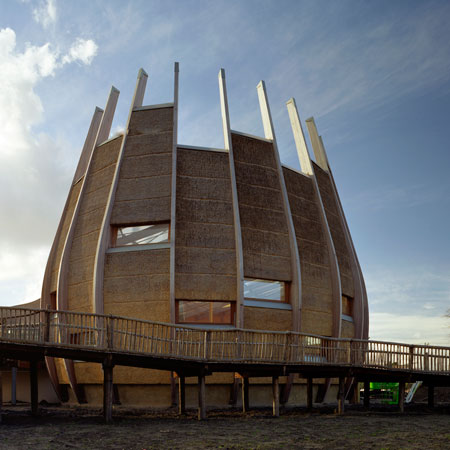
Savannehuis by LAM Architects
Dutch architects LAM have completed a sustainable giraffe enclosure for Rotterdam Zoo, which opens next week.
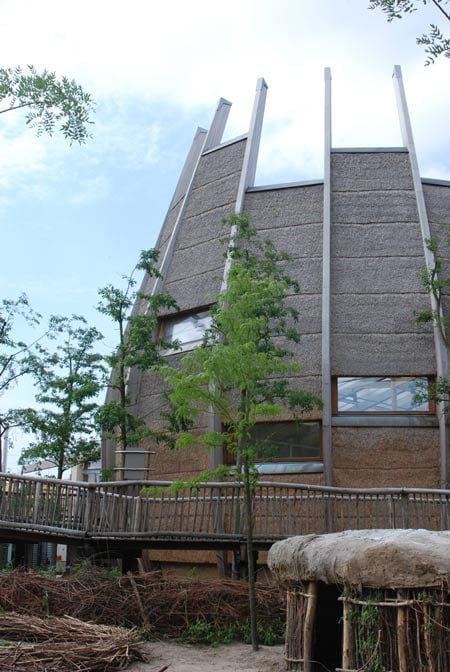
The architects adopted a "Cradle to Cradle" approach to the design and construction of the project, claiming the enclosure is the first such building designed for animals and is the most sustainable animal house in the Netherlands.
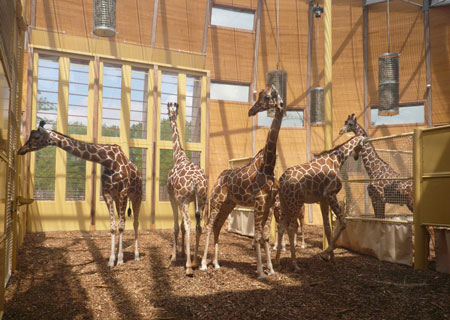
The enclosure, modeled on African coral, has been designed to take advantage of passive solar heating and natural ventilation and lighting.
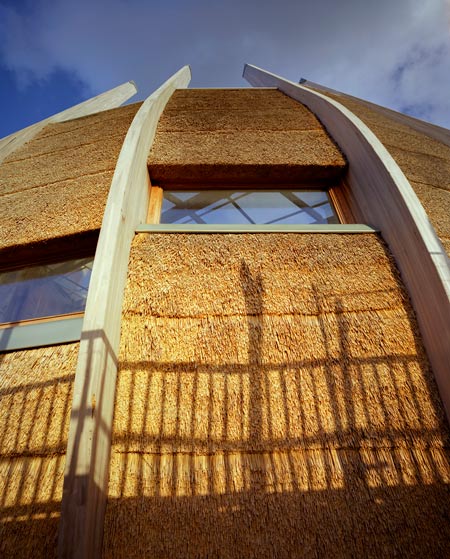
Specially designed 'cuddle walls' - steel elements heated by the burning of wood chips - provide warmth for the giraffes without the need to heat the whole enclosure.
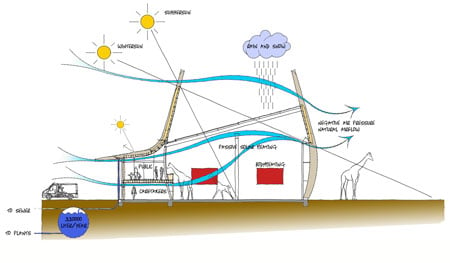
The Savannehuis opens on 8 July. Photographs are by Franken Architecturalphotograph
Here are further details from LAM Architects:
.
--
Sustainable Giraffe House Opens Doors
On July 8 the mayor of Rotterdam (mayor AbouTaleb) opens the most sustainable building designed for animals in the Netherlands: the Savannah House in the Rotterdam Zoo (Blijdorp).
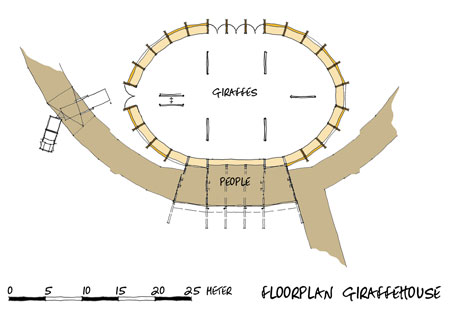
Cradle to Cradle
The Savannah House is unique: it is the first building designed for animals according to the principles of the sustainability philosophy called Cradle to cradle. An assignment that fits the ambitions of the Rotterdam Zoo, where sustainability is on of the key issues. “It forced us to unite the tensions between the neutral climate requirements ambitions and that of a healthy climate for the African animals. The end result gives a special satisfaction’. Says Menno Lam of LAM architects (Wageningen).
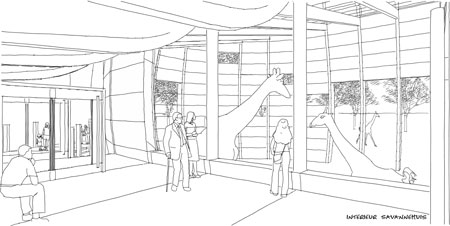
Sustainable shelter & healthy indoor climate.
The accommodation for the giraffe is designed as a "shelter", of witch the archetype of the African coral has served as the model. The design provides a comfortable place for the animals. It also gives them more living space, for the giraffes are free and can go in and out as the please. To create a sustainable building with a good indoor climate, the design takes into account the natural elements: sun, wind and rain.
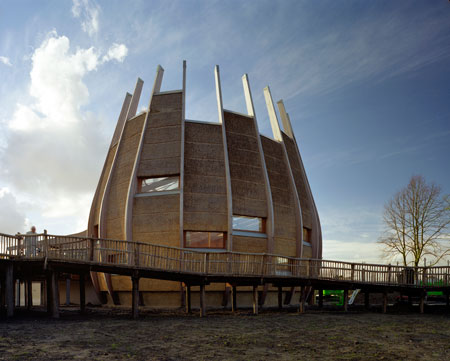
For natural light and heat so-called passive solar energy is used. The roof is transparent and the height of the walls is determined for the best solar potential. Inside but also outside, because even on a beautiful sunny autumn or winter day, the animals are able to stand at the north side outside the building and in the sun (see section). On cold and cloudy days is usually sufficient only to heat the animals instead of the whole 4500m3 residence. This is possible because the giraffes can find the necessary warmth ad so called "cuddle-walls”. The heat that is required for these "cuddle-walls” are woodchips burned in stead of fossil fuels.
Natural ventilation also contributes to the pleasant atmosphere. This is possible because the building and the ventilation are oriented at the most common wind direction. The principle of negative air pressure pulls the wind trough the building. The annually rainfall of approximately 330,000 litres, on the roof of the Savannah House will be collected and used for the thirsty plants in the adjacent building.
Animal welfare
The floor plan is without corners, to provide a relaxed and natural behaviour of the animals. In this way, they are not able clamp each other at a corner, the animals can always turn their back on a approaching conflict an run away. The 'bulging' of the facade gives the animals more freedom. The giraffes will never experience the physical limits of the building, for the building bends away from them.
Many materials within “licking-range” of the giraffes are applied untreated. This is to prevent them from toxic substances, witch could get in through this licking. Where it is not possible to have an untreated solution a very durable non toxic application is used.
A specially designed “crush” ensures that animals are not to be stunned by research. In addition, an investigation or operation, because of this “crush” is quickly and smoothly done.
Summary
The Savannah House, with its specific characteristics, is comfortable for the animals, user-friendly and energy efficient/effective. Sustainability is not only reflected in the energetic concept of the design but also in, plan and materials including untreated wood with FSC-label and grasses as reed and pressed bamboo. By carefully selecting and applying the right materials the building is nearly free of maintenance, convenient for operating costs, but also for the environment. Less maintenance means even less annoyance for the animals, the public and less environmental harassment.
Function of the buidling: Giraffe-house and visitor centre
Gross Floor area: approx. 570m2
Gross capacity: approx. 4600m3
Construction: September 2007 – November 2008
Building costs: ca. 900.000,-- excl. installations
Client: Stichting Koninklijke Rotterdamse Diergaarde, Rotterdam Zoo (__+31(0) 10- 44 31 431)
Datum of Commissioning: July 2009
Design: LAM architects bna
Structural engeneer: CAE Nederland
Wooden frames: Heko Spanten
Buidling contractor: Dura Vermeer Heyma Rotterdam
E-contractor: Electro-Four